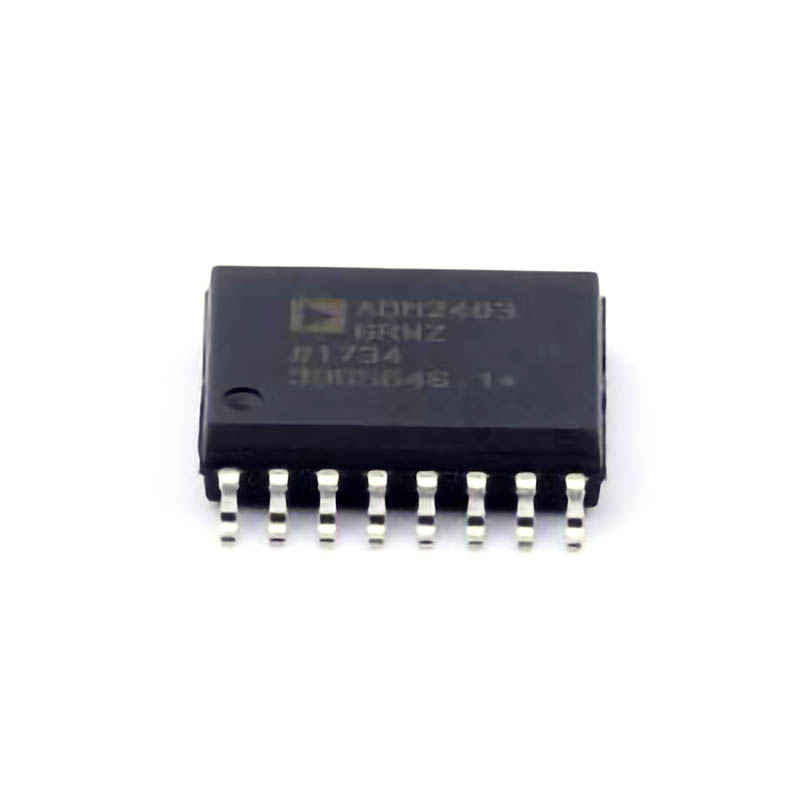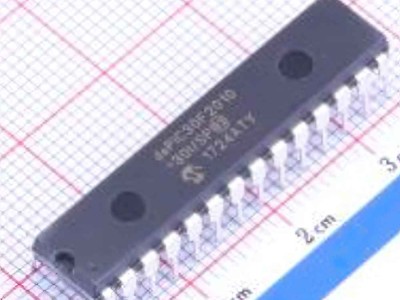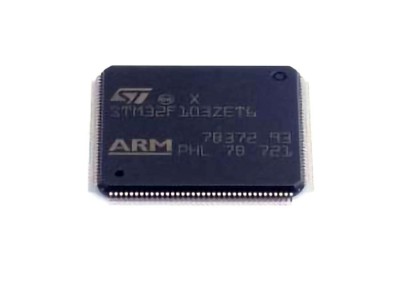
In this article, we delve into common troubleshooting techniques and solutions for the ADM2483BRWZ , a high-performance RS-485/RS-422 transceiver with integrated isolators. The ADM2483BRWZ is widely used in industrial applications for its robust performance, but like all complex components, it may encounter issues in certain circumstances. We’ll explore common problems, their potential causes, and practical solutions to keep your system running smoothly.
Understanding the ADM2483BRWZ and Common Issues
The ADM2483BRWZ is a Power ful and versatile component used primarily in industrial automation and Communication systems. It is an RS-485/RS-422 transceiver, meaning it facilitates the transmission and reception of signals across differential communication lines in environments where electromagnetic interference ( EMI ) could otherwise degrade the signal quality. The key feature of the ADM2483BRWZ is its integrated galvanic isolation, making it ideal for use in noisy, electrically harsh environments.
However, even the most well-designed components can sometimes run into issues. Whether it's a communication breakdown, improper configuration, or failure due to external factors, understanding the root cause of these problems is essential for ensuring reliable system operation. Below, we outline several common issues faced by users of the ADM2483BRWZ and possible solutions to mitigate or resolve them.
1. Communication Failure: Why it Happens
One of the most common issues reported with the ADM2483BRWZ is communication failure. This could manifest as the inability to send or receive data over the RS-485 or RS-422 bus. In most cases, communication failure is caused by one or more of the following factors:
Incorrect Wiring: The ADM2483BRWZ supports differential signaling, and incorrect wiring can result in signal inversion or poor signal integrity. It’s important to ensure that the A and B pins are correctly connected to the corresponding differential lines. If they are reversed, communication will fail.
Termination Resistors Missing or Incorrectly Placed: RS-485 systems require termination resistors at both ends of the bus to minimize signal reflections. Without proper termination, communication may be erratic or unreliable. Similarly, improper placement or incorrect resistance values could cause issues.
Bus Loading: Too many devices on the bus or too long a cable length can result in excessive loading, leading to signal degradation. Always ensure that the number of devices and cable length does not exceed the limits specified in the datasheet.
2. Power Supply Issues
The ADM2483BRWZ requires a stable and correctly configured power supply to operate efficiently. Variations in voltage or current can cause malfunction or complete failure of the transceiver. Below are some potential power-related issues:
Insufficient Voltage: The ADM2483BRWZ operates within a certain voltage range (typically 3.0V to 5.5V). Ensure that the supply voltage is within this range to avoid malfunction.
Noise and Ripple on Power Supply: If the power supply introduces noise or ripple, it can affect the integrity of the communication signals. It's recommended to use low-noise power supplies or add filtering capacitor s to smooth out any noise.
3. Faulty Grounding or Isolation
The ADM2483BRWZ provides galvanic isolation, but incorrect grounding or lack of isolation between the transceiver and the system can cause a range of issues:
Ground Loops: Ground loops are a common issue in industrial systems where multiple devices are connected to different ground points. These loops can cause noise or even damage the components. Ensure that the ADM2483BRWZ is properly grounded to avoid potential issues.
Insufficient Isolation: The isolation feature helps protect the transceiver and the system from voltage spikes or other electrical disturbances. If the isolation is compromised, for example, due to damaged components or improper PCB design, the transceiver might stop functioning properly.
Effective Solutions and Troubleshooting Steps
Now that we’ve reviewed the common issues, let’s discuss the troubleshooting process and potential solutions to ensure the ADM2483BRWZ operates as intended.
1. Diagnosing Communication Issues
If you’re facing communication failure with the ADM2483BRWZ, follow these diagnostic steps:
Check the Wiring: Double-check the wiring between the transceiver and the differential lines. The A and B terminals should be connected properly. Use a multimeter to ensure there is continuity in the circuit.
Verify Termination Resistor Placement: Ensure that a proper termination resistor (typically 120 ohms) is placed at each end of the RS-485 bus. Improper termination can result in signal reflections, leading to communication breakdowns.
Measure the Signal Integrity: Use an oscilloscope to check the waveform of the differential signals (A and B). You should see a clean, differential signal. If the signal appears noisy or distorted, there might be issues with the transceiver or the wiring.
Check Bus Loading: Ensure that the number of devices connected to the bus and the cable length fall within the specifications for the ADM2483BRWZ. If the bus is too long or there are too many devices, signal degradation may occur.
2. Addressing Power Supply Problems
To address power-related issues, perform the following checks:
Measure the Voltage: Use a voltmeter to ensure that the voltage supplied to the ADM2483BRWZ is within the specified range (3.0V to 5.5V). If the voltage is too low or too high, the transceiver may not work properly.
Inspect for Power Noise: Power noise can be difficult to detect with a basic meter, but you can check for noise or ripple using an oscilloscope. If noise is present, consider adding decoupling capacitors close to the power supply pins of the transceiver.
Ensure Stable Power Source: If you suspect that the power supply is unstable, try switching to a different, known-good power source. If the problem is resolved, the issue likely lies with the original power supply.
3. Improving Grounding and Isolation
Proper grounding and isolation are crucial for the ADM2483BRWZ to function correctly:
Verify Ground Connections: Ensure that the ground (GND) of the ADM2483BRWZ is connected to a solid reference ground in the system. Ground loops can create interference that disrupts communication, so try to isolate different ground potentials.
Check Isolation Voltage Ratings: The ADM2483BRWZ is designed to withstand specific isolation voltages, but if these values are exceeded, the isolation may fail. Check the datasheet to confirm that the isolation voltage ratings are not being exceeded, especially in noisy industrial environments.
Use Proper Shielding: If you're operating in a particularly noisy environment, consider adding shielding around the communication lines. Shielding can help protect the differential signals from external electromagnetic interference (EMI).
4. Advanced Diagnostics and Testing
If basic troubleshooting doesn't resolve the issue, consider the following advanced techniques:
Use a Protocol Analyzer: If the communication seems to be partially working but is unreliable, using a protocol analyzer can help you inspect the data being sent over the RS-485 bus. This can help identify timing issues or data corruption.
Swap Components: If the issue persists, consider swapping out the ADM2483BRWZ with a known-good unit to rule out the possibility of a defective component.
Firmware and Software Checks: If your application involves programmable logic, ensure that the firmware or software driving the communication lines is correctly configured. Misconfigured software could lead to improper initialization or communication errors.
5. Preventive Measures
To avoid encountering these issues in the future, take the following preventive measures:
Use Proper Cable Management : Ensure that cables are properly shielded and kept away from high-voltage or noisy areas to minimize EMI. Also, ensure that the cables are of the correct impedance to maintain signal integrity.
Regular Testing and Maintenance: Periodically check the system for signs of wear or degradation, such as damaged cables or connectors. Regular testing can help catch issues early before they become major problems.
Use Redundant Power Supplies: If power supply issues are a frequent concern, consider using a redundant power supply or adding a UPS (uninterruptible power supply) to ensure constant voltage levels.
By following these troubleshooting steps and implementing best practices, you can ensure that the ADM2483BRWZ transceiver operates efficiently and reliably in your system. Whether you’re facing communication failures, power issues, or isolation problems, the solutions outlined above will help you address these challenges and keep your industrial systems running smoothly.
If you are looking for more information on commonly used Electronic Components Models or about Electronic Components Product Catalog datasheets, compile all purchasing and CAD information into one place.


